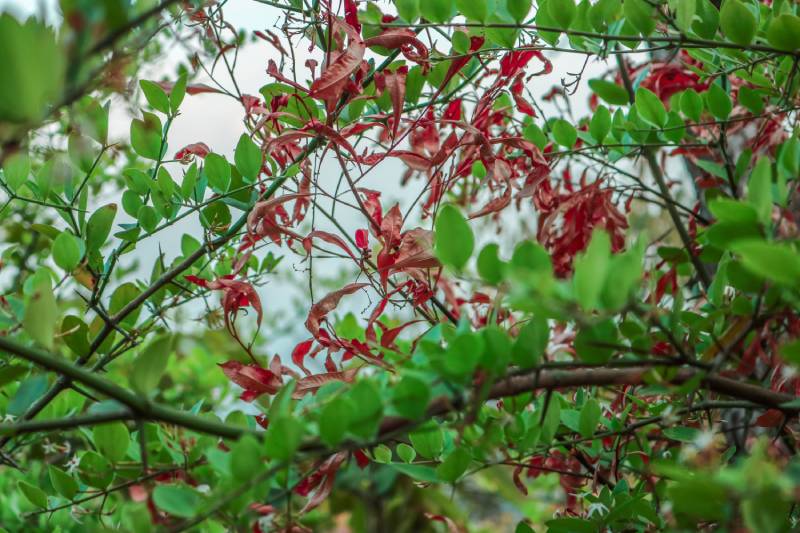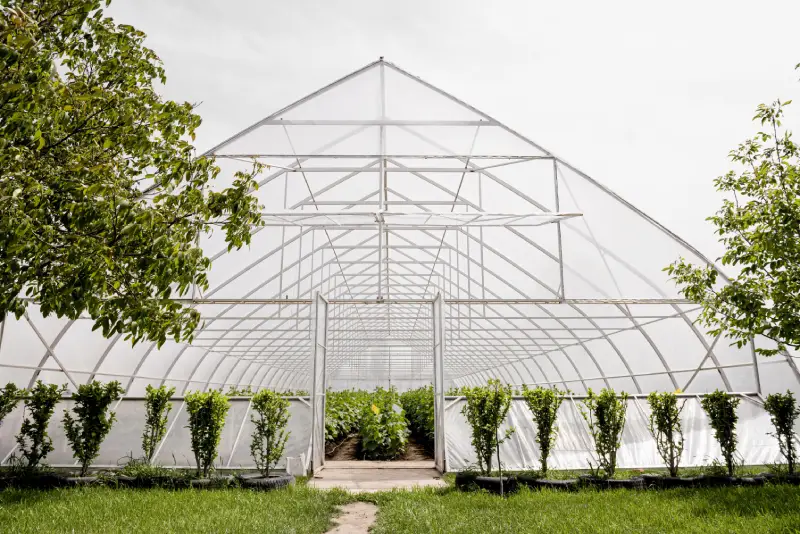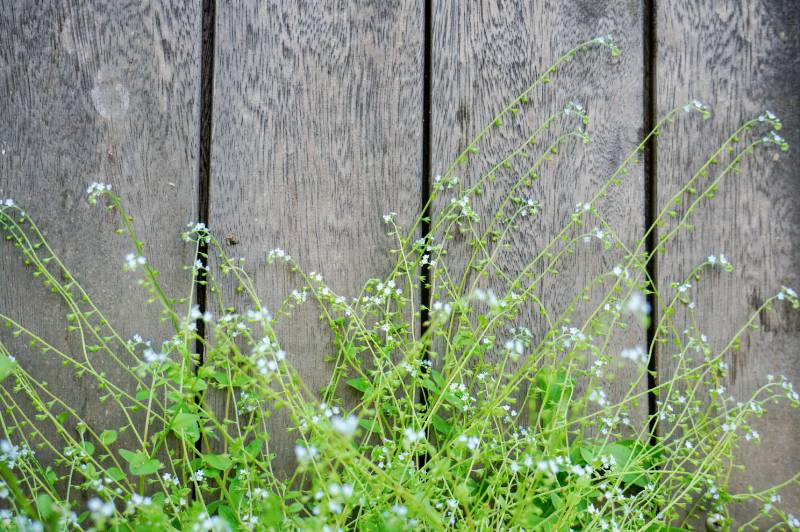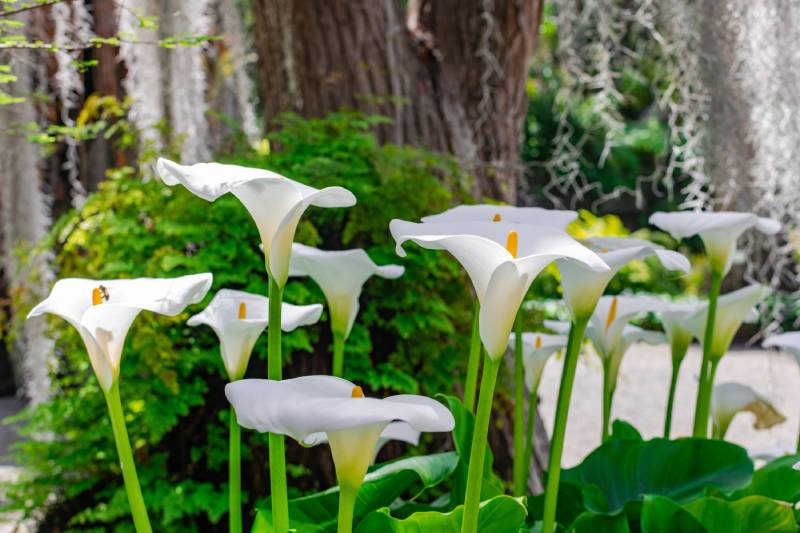Growing Heavenly Honeysuckle Vines

Heavenly honeysuckle vines are a lovely addition to any garden, especially with their lovely blossoms and delicious scent. These adaptable climbers give height and visual appeal to your environment by covering structures like arbors, trellises, and fences. They are renowned for their rapid growth.
Honeysuckles are visually pleasing and also draw helpful pollinators like hummingbirds, butterflies, and bees, which increases the biodiversity in your garden. Growing heavenly honeysuckle vines may be a satisfying endeavor, but it does take some understanding of their unique requirements and traits.
This book will give you all the knowledge you need to help you choose the best kind, Plant, nurture, and maintain these fascinating plants. Whether you’re a novice or an experienced gardener, these guidelines will assist you in creating growing, healthy honeysuckle vines that bring beauty and fragrance to your outdoor space.
Choosing the Right Variety

Consider your demands and the climate while selecting the perfect variety of heavenly honeysuckle vines. To assist you in making an informed decision, the following are some popular types of Honeysuckle and their attributes:
Lonicera japonica (Japanese Honeysuckle)
Features: Vigorous, evergreen, or semi-evergreen vine with fragrant white and yellow flowers.
Climate: Hardy in USDA zones 4-9.
Growth: It can be invasive in some regions due to its rapid growth.
Best For: Covering large areas quickly, such as fences and trellises.
Lonicera sempervirens (Trumpet Honeysuckle)
Features: Deciduous to semi-evergreen vine with red, trumpet-shaped flowers that attract hummingbirds.
Climate: Hardy in USDA zones 4-9.
Growth: Less aggressive than Japanese Honeysuckle; suitable for smaller spaces.
Best For: Garden focal points, attracting pollinators, and less invasive growth.
Lonicera periclymenum (European Honeysuckle)
Features: Deciduous vine with highly fragrant flowers in white, yellow, and pink shades.
Climate: Hardy in USDA zones 5-9.
Growth: Moderate growth rate, suitable for temperate climates.
Best For: Traditional gardens, cottage-style gardens, and fragrant blooms.
Lonicera x brownii (Brown’s Honeysuckle)
Features: Hybrid vine with tubular, red-orange flowers.
Climate: Hardy in USDA zones 4-9.
Growth: Non-invasive, moderate growth rate.
Best For: Decorative arbors, trellises, and attracting hummingbirds.
Lonicera fragrantissima (Winter Honeysuckle)
Features: Deciduous or semi-evergreen shrub-like vine with highly fragrant, creamy white flowers that bloom in winter.
Climate: Hardy in USDA zones 4-8.
Growth: Grows more like a bush, not a vigorous climber.
Best For: Winter interest, fragrance, and smaller garden spaces.
Planting Location

For heavenly honeysuckle vines to flourish well, a planting site is essential. The following are essential factors to make sure your Honeysuckle flourishes:
Full Sun to Partial Shade: Honeysuckle vines generally prefer full sun, which means at least 6 hours of direct sunlight daily. However, they can tolerate partial shade, especially in hotter climates where afternoon shade can protect them from intense heat.
Well-Drained Soil: Honeysuckles prefer well-drained soil to prevent root rot. If your soil is heavy clay or tends to retain water, amend it with compost or sand to improve drainage.
pH Levels: They thrive in neutral to slightly acidic soil (pH 5.5-7.5). If you’re unsure about your soil’s pH, conduct a soil test and amend it if necessary.
Climbing Structures: Honeysuckles are vigorous climbers and need support structures like trellises, arbors, fences, or pergolas. Ensure the structure is sturdy enough to support their weight and vigorous growth.
Spacing: Allow adequate space for the vine to spread. Plant them 2-3 feet apart to avoid overcrowding and ensure good air circulation.
Avoid Crowding: Do not plant honeysuckles too close to other plants that may compete for nutrients and water. Good spacing helps prevent the spread of pests and diseases.
Companion Planting: Honeysuckles pair well with other climbers or shrubs that can share their support structure or provide a complementary visual effect.
Wind Protection: While honeysuckles are generally hardy, planting them in a sheltered location can protect them from strong winds that may damage the vines or flowers.
Frost Protection: In colder regions, planting near a south-facing wall can provide extra warmth during winter and early spring, helping the Plant to thrive.
Irrigation: Ensure the planting location is accessible to a reliable water source. Regular watering is essential, especially during the first year while the Plant establishes its roots.
Wildlife Habitat: If you aim to attract wildlife such as birds, bees, and butterflies, plant honeysuckles in a location where these creatures can easily access them.
Invasive Potential: In some areas, particularly with Lonicera japonica, honeysuckles can become invasive. Check local guidelines to ensure you’re planting responsibly.
Planting Steps

Heavenly honeysuckle vines must be planted correctly to support healthy growth and development. To make sure your honeysuckle vine is planted correctly, follow these steps:
Best Time to Plant: When the weather is mild, plant honeysuckle vines in early spring or fall. This allows the Plant to establish roots before facing extreme temperatures.
Choose the Location: Select a sunny to partially shaded spot with well-drained soil and a sturdy support structure nearby.
Soil Preparation: Loosen the soil to a depth of 12-15 inches and mix in compost or well-rotted manure to improve fertility and drainage.
Hole Size: Dig a hole twice as wide and the same depth as the root ball of the honeysuckle vine.
Spacing: If planting multiple vines, space them 2-3 feet apart to ensure proper air circulation and room for growth.
Remove the Plant from the Container: Gently remove the Honeysuckle from its nursery pot. If the roots are tightly bound, carefully tease them apart to encourage spreading.
Place the Plant in the Hole: Position the vine in the hole, ensuring the top of the root ball is level with the surrounding soil.
Backfill the Hole: Fill the hole with the excavated soil, pressing gently around the base of the Plant to eliminate air pockets. Ensure the soil is firm but not compacted.
Initial Watering: Thoroughly water the newly planted vine to settle the soil around the roots.
Ongoing Watering: Keep the soil moist but not waterlogged during the first growing season. Water deeply once a week, more often during dry spells.
Apply Mulch: Spread a 2-3 inch layer of mulch around the base of the Plant, leaving a gap around the stem to prevent rot. Mulch helps retain soil moisture, suppress weeds, and regulate soil temperature.
Training the Vine: Gently tie the vine to the support structure using garden twine or soft ties. Guide and tie new shoots to the support as the vine grows to encourage upward growth.
Sturdy Support: Ensure the support structure is robust enough to hold the mature vine, as honeysuckles can become heavy.
Prune Lightly: Trim back any damaged or overly long stems after planting to encourage bushier growth. Avoid heavy pruning at this stage to minimize stress on the Plant.
Initial Feeding: Incorporate a balanced, slow-release fertilizer into the soil at planting time.
Ongoing Fertilization: Feed the Honeysuckle annually in early spring with a balanced fertilizer to promote healthy growth and abundant flowering.
Support Structure

Heavenly honeysuckle vine development and beauty depend on having a strong and suitable support system. The following comprehensive choices and advice can help you build up the support structure:
Trellises: These are classic choices for honeysuckle vines. Trellises can be simple or decorative, providing an excellent framework for climbing vines.
Arbors and Pergolas: Ideal for creating garden entrances or shaded walkways, these larger structures can support the weight of mature honeysuckle vines.
Fences: Wooden or metal fences can double as support structures, efficiently using garden space while providing privacy and a green barrier.
Walls: With wall-mounted trellises or wires, you can train honeysuckle vines to grow vertically along walls, adding greenery and color to bare surfaces.
Obelisks and Pillars: These free-standing structures add vertical interest to the garden and are perfect for smaller spaces or as focal points.
Wood: A natural and aesthetic choice, wood can be used to create trellises, arbors, and fences. Ensure the wood is treated to withstand weather conditions.
Metal: Durable and sturdy, metal structures can support heavier vines. Options include wrought iron, steel, and aluminum.
PVC/Vinyl: Lightweight and weather-resistant, PVC and vinyl are low-maintenance options for trellises and other structures.
Stability: Ensure the structure is securely anchored in the ground or attached to a stable surface. Use concrete footings for arbors and pergolas if necessary.
Spacing: Position the structure close enough to the Plant so the vine can easily reach it as it grows. Planting the vine 6-12 inches away from the structure works well.
Initial Training: When the vine is young, gently tie the main stems to the support structure using garden twine, soft ties, or plant clips. Avoid using materials that can damage the stems.
Guiding Growth: Guide new shoots toward the support as the vine grows. Secure the shoots loosely to allow for growth and movement.
Pruning for Shape: Regularly prune the vine to maintain the desired shape and encourage bushier growth. Remove any stems that stray too far from the support structure.
Inspection: Regularly check the support structure for signs of wear or damage. Repair or reinforce as needed to ensure it remains strong enough to support the vine.
Cleaning: Clean the structure periodically to prevent the buildup of debris or mold, especially in humid climates.
Conclusion
Heavenly honeysuckle vines have a lovely scent, luxuriant foliage, and stunning blossoms that may completely change your yard. You may have a flourishing honeysuckle that beautifies your outside area by carefully choosing the proper kind, ensuring ideal planting circumstances, and giving a solid support system. Your heavenly honeysuckle vines will thrive if you follow these tips, giving your garden a hint of natural beauty, vertical intrigue, and scent. Savor the attractiveness and advantages these adaptable climbers provide to your outside area.


Leave a Reply